
Match & Share 2022
Ride-pooling reimagined – where savings meet safety, and you decide who you share your ride with
Business opportunity
I am writing this case study in the summer of 2022. Passenger throughput at U.S. airports has been steadily climbing and nearly reached pre-pandemic levels by April 2022. Airports Council International Europe revealed that passenger numbers at airports across the continent jumped 247% year-on-year in Q1 2022, adding 660 million passengers.
At the same time, Bolt’s ride-hailing GMV from airports is about 3%, while for competitors, rides make up to 10% of total revenue and 13% of gross bookings. Additionally, up to 8% of trips come from train stations and other transport hubs. Our goal is to improve the airport rider experience and bridge the current revenue gap.
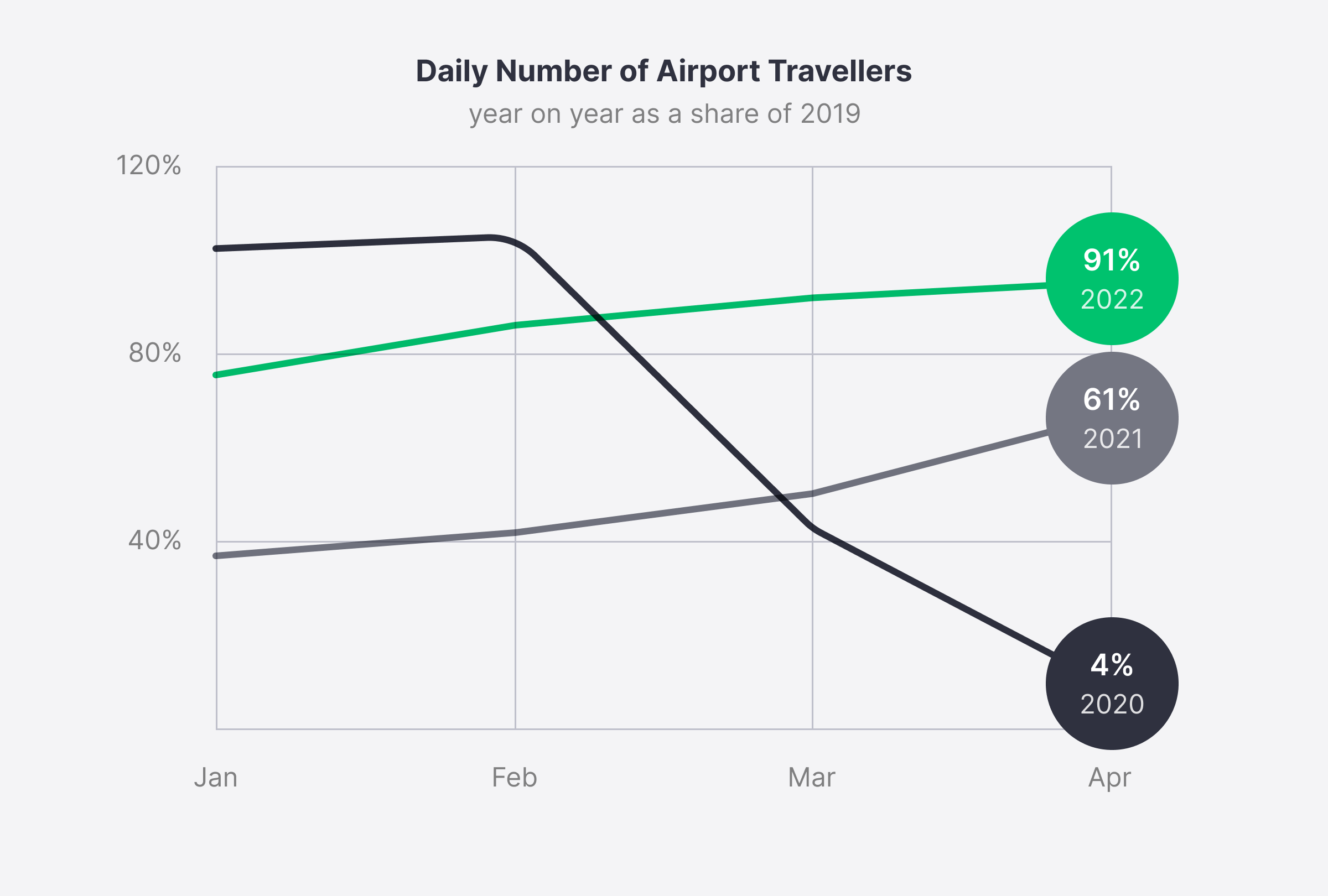
Average daily number of travelers passing through TSA checkpoints at U.S. airports as a share of 2019 traffic. Source: U.S. Transportation Security Administration

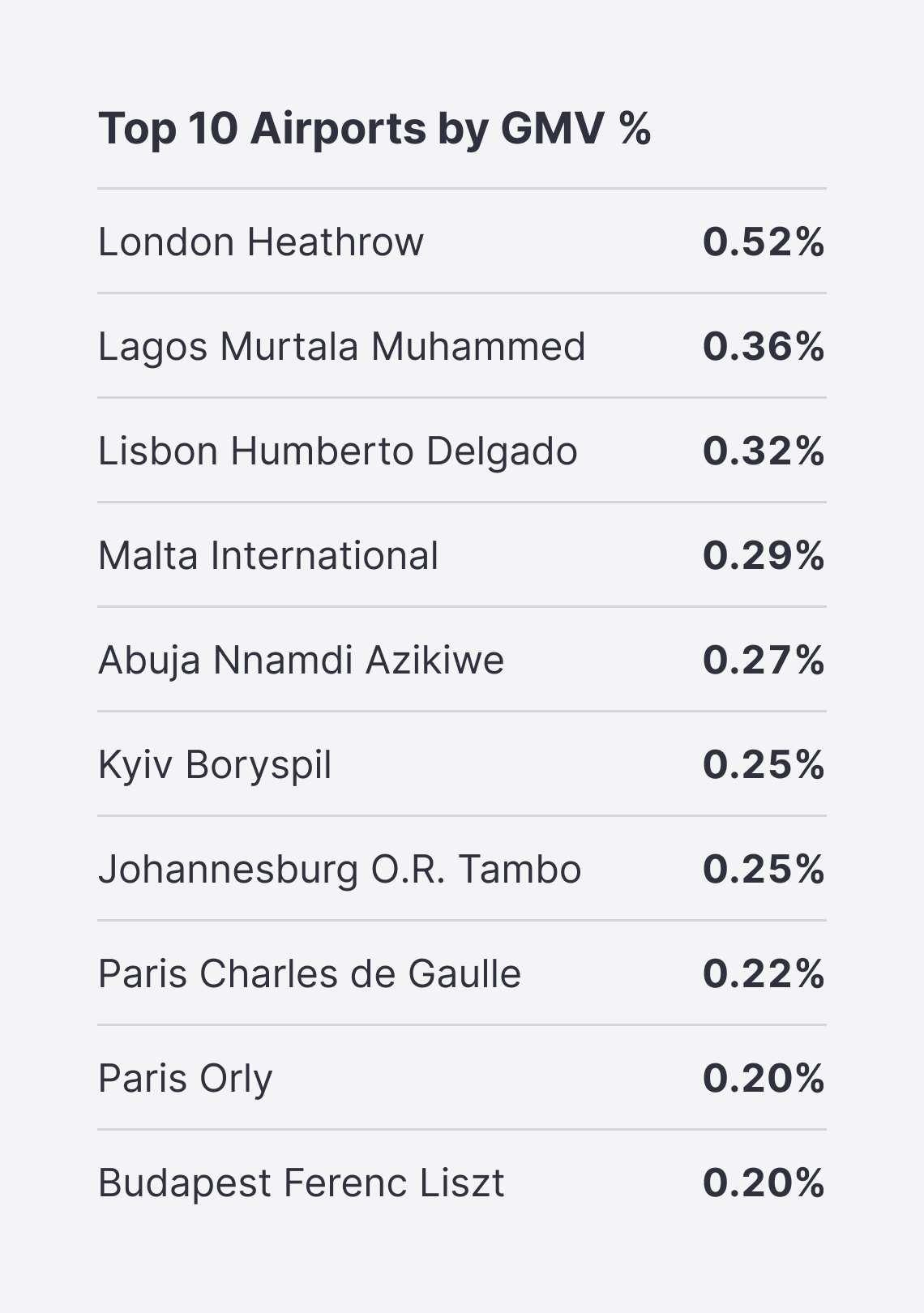
Usually, there are several ways to travel between the city and the airport. In order of average price, the most popular are:
- A friend’s car, if available
- A complimentary hotel shuttle, if available
- Public transport, such as a bus, minibus, subway, or train
- Ride-hailing services, such as Bolt, Uber, Lyft, Grab, and others:
- Ride-on-demand
- Ride-pooling (not supported by Bolt in 2022)
- Pre-booked rides (not supported by Bolt in 2022)
- Local taxi
- Car-sharing service
- Long-term car rental
- Luxury car with private chauffeur
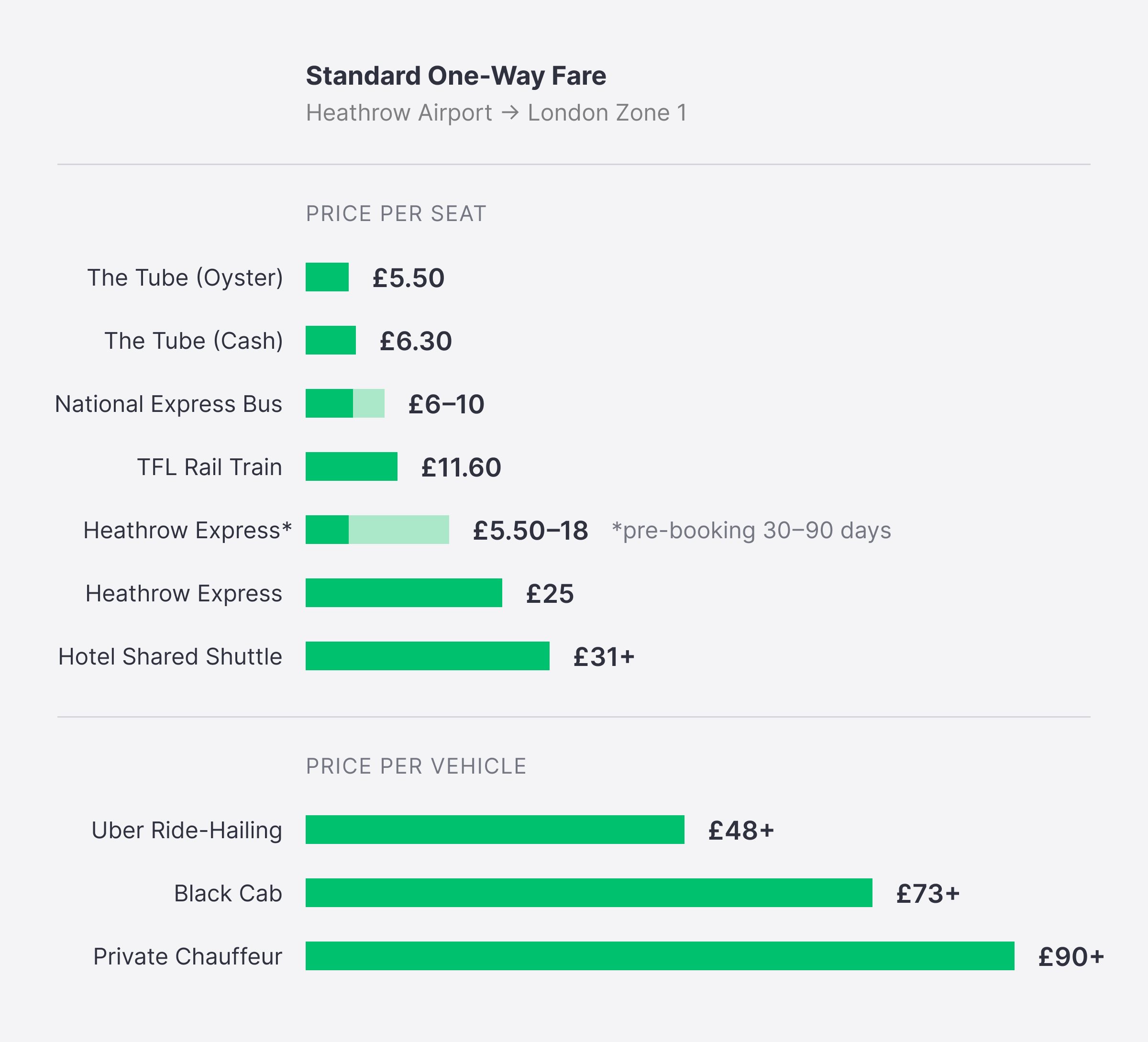
Comparison of public and private transport pricing from Heathrow to the centre of London, 2022.
Travelling by taxi or minicab was the most popular way to get to Heathrow. This figure gradually increased over two decades, reaching 32% by 2019.
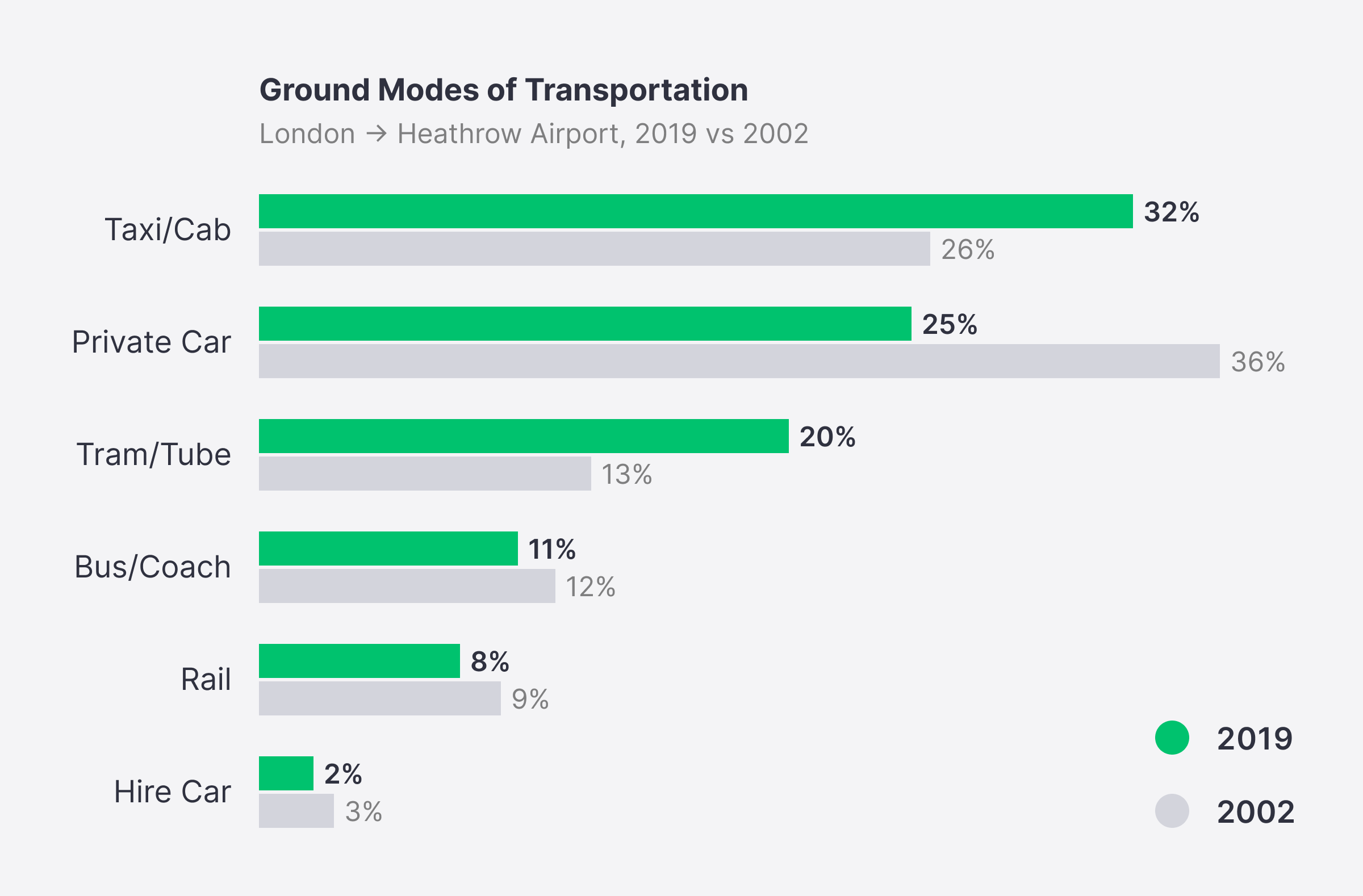
Comparison of transport modes people used to get to Heathrow, 2002 vs 2019. Source: Statista
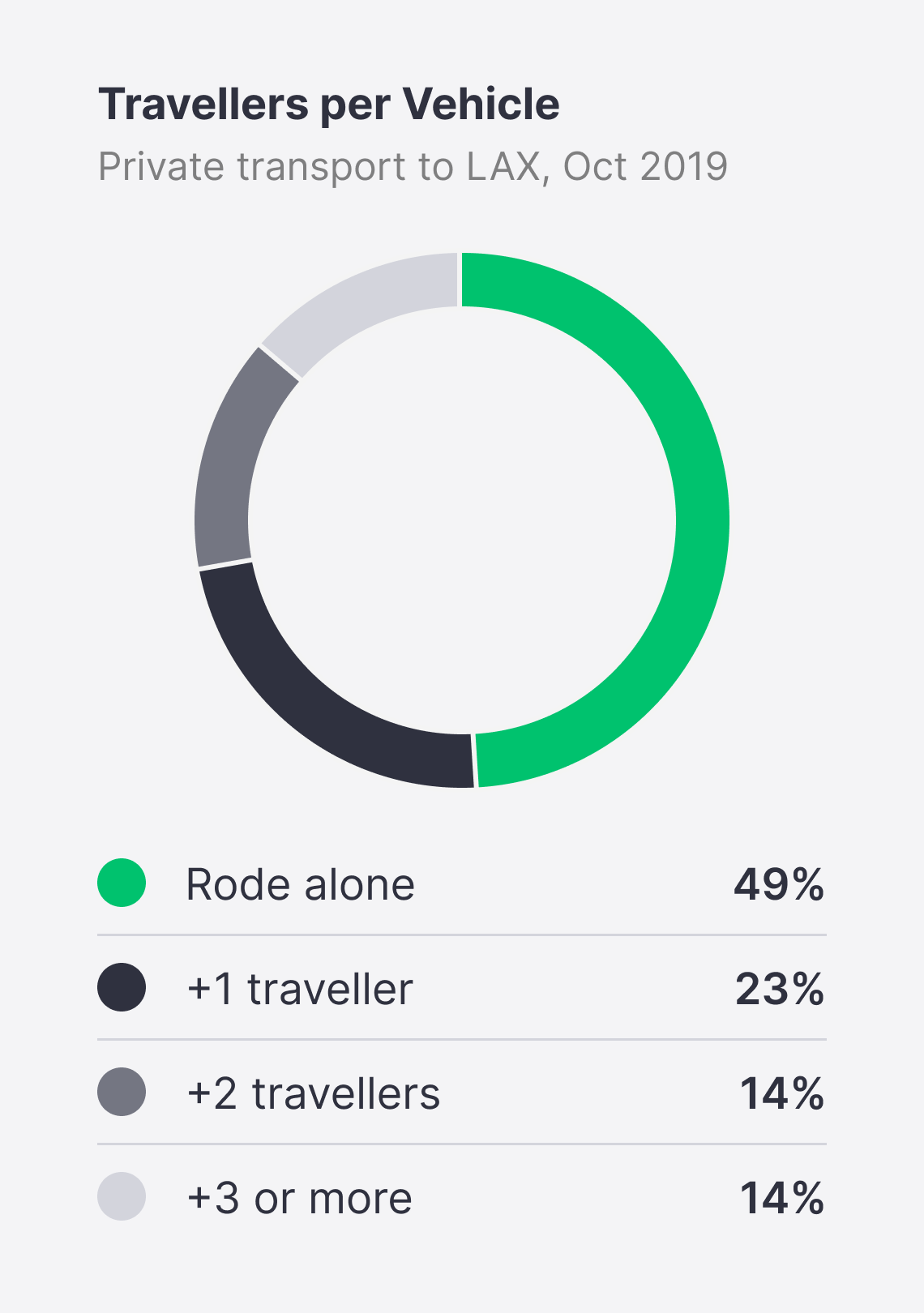
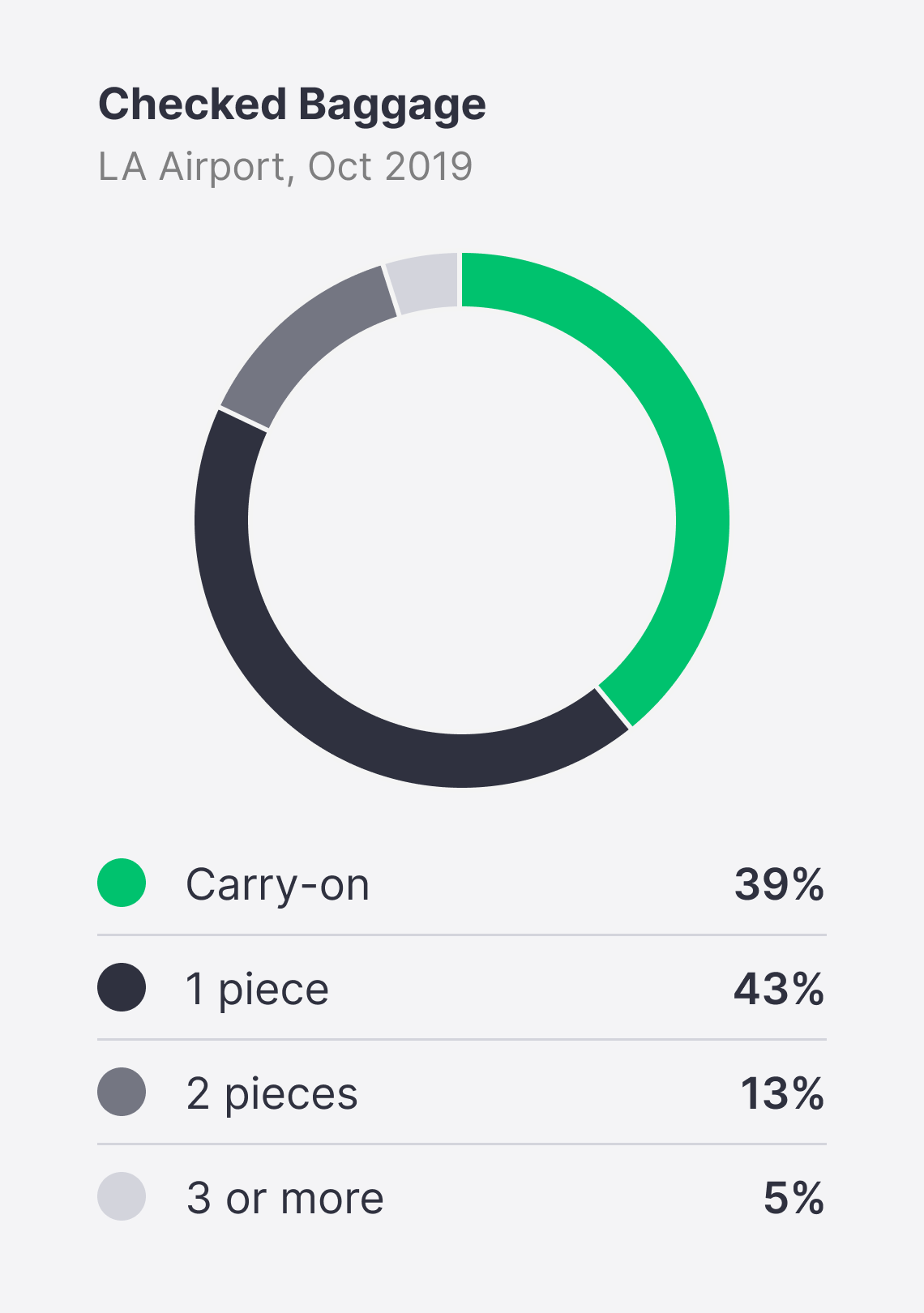
Design Challenge
My task was to design an experience integrated into the Bolt app that would help transport passengers to or from the airport in the most efficient way. In other words, how can we lower the average price without spoiling the user experience? Two main options were considered, each with its own benefits and downsides.
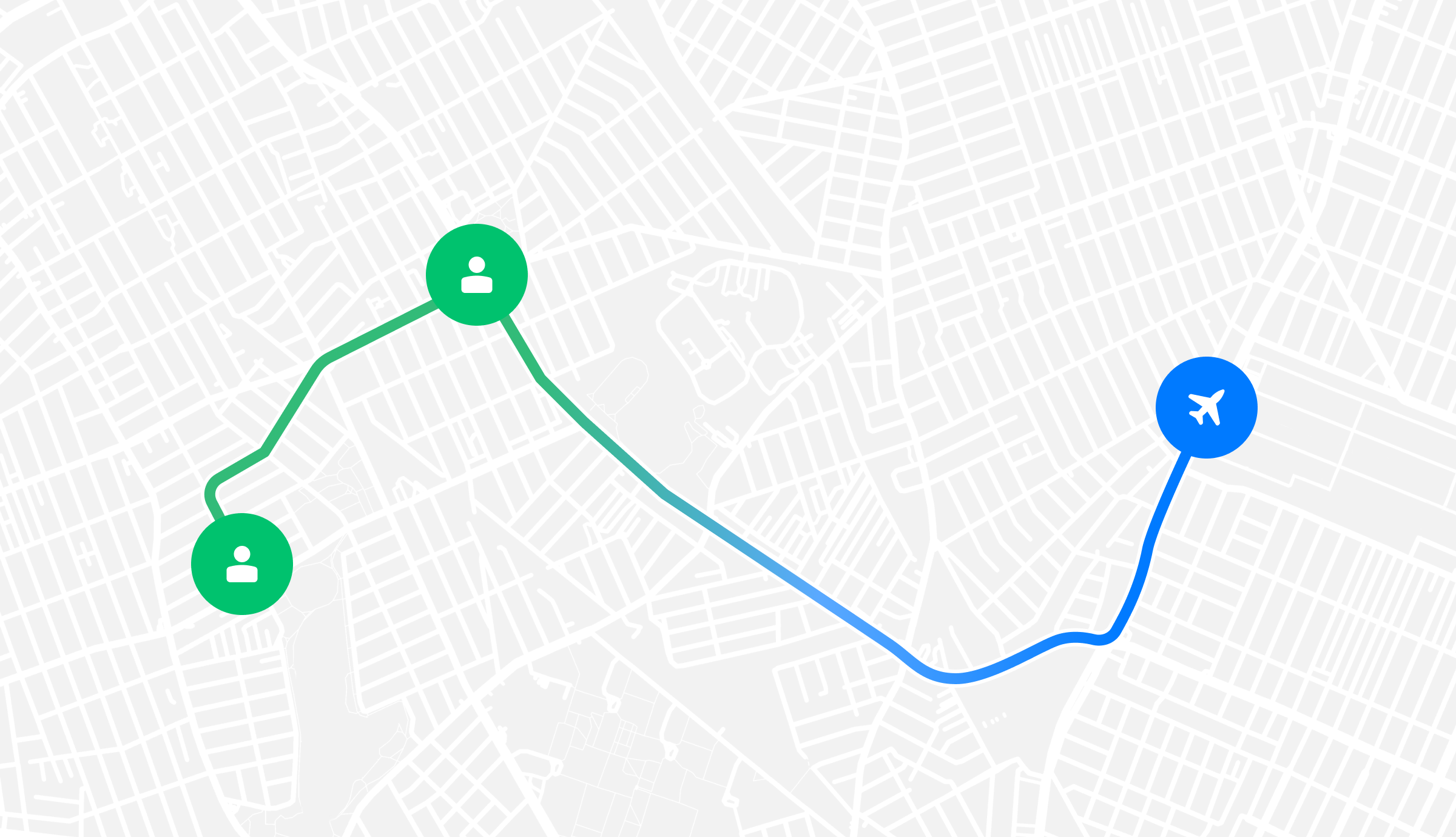
1. Ride-pooling mode: 2–3 riders share a large part of their route
- 👍 Up to 40% off
- 👍 Flexible stops
- 👍 Flexible pick-up times
- 👍 Easier to integrate into the ride-hailing process
- 👎 Difficult to match riders in less populated areas
- 👎 Uncertainty about who you will share the ride with
- 👎 Other riders could cause delays
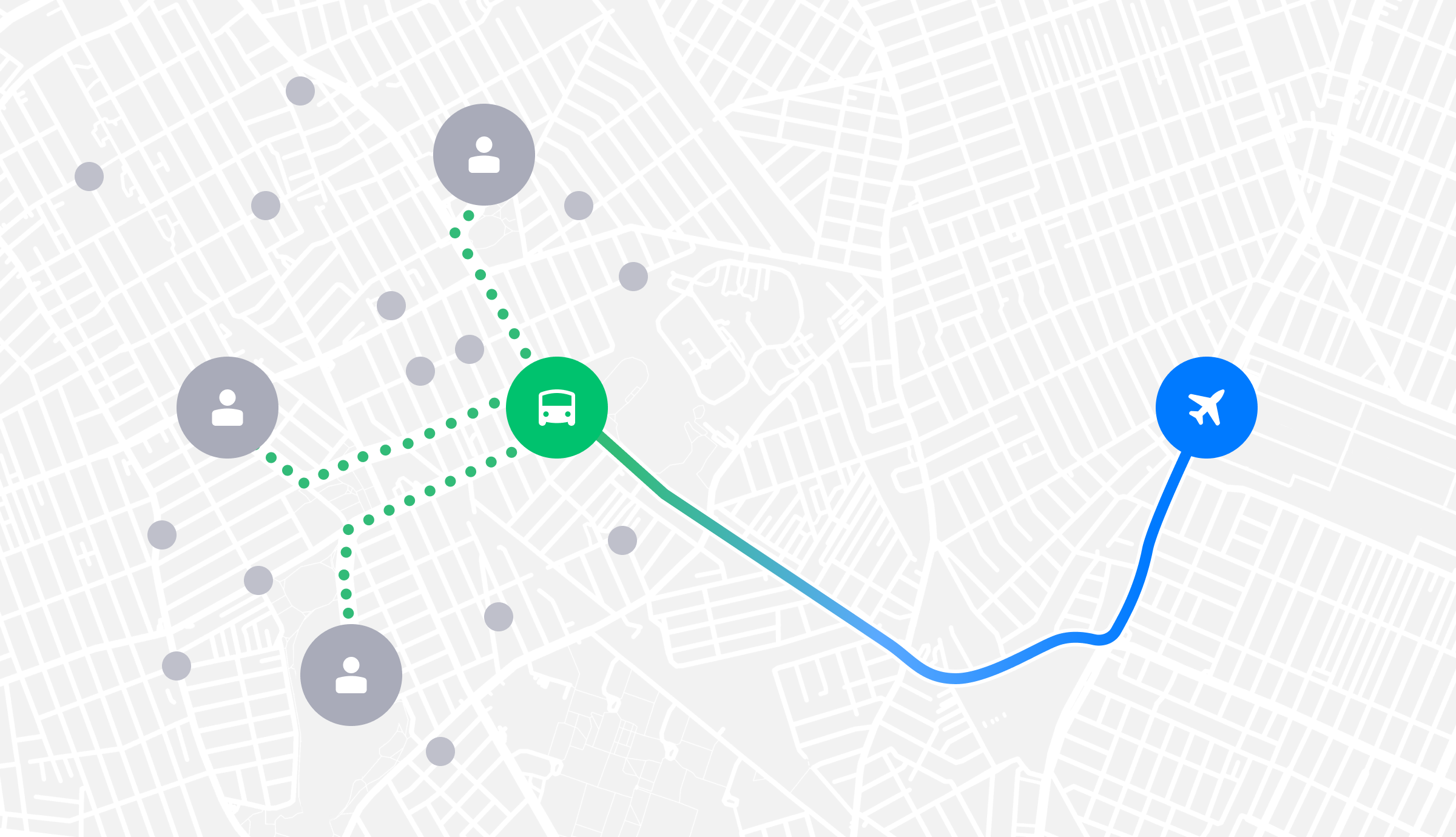
2. Airport bus shuttle: 10–50 passengers per bus
- 👍 A lot cheaper
- 👍 Taxis can be offered to reach shuttle stops
- 👎 Fewer bus stop locations
- 👎 Possible luggage issues
- 👎 Fixed schedule
- 👎 Difficult to combine with taxi in one flow
- 👎 May require working with bus companies
As my task was to integrate the solution into the existing ride-hailing app, I decided to proceed with the ride-pooling feature. A shuttle would require quite a different user flow so I would rather design it as a separate domain.
User research
I interviewed frequent airport visitors who had travelled at least four times a year before the pandemic. The purpose of the study was to understand their preferred methods of getting to the airport and the reasons behind their choices.
Most people change or combine their transport choices based on several factors, including price, distance, trip purpose, time constraints, traffic and weather conditions, co-riders, luggage amount, and their emotional and physical state. When planning to order a taxi, people consider the price, ETA (estimated time of arrival), and the time to reach their destination. These factors are always compared to what competitor apps offer. Here are some findings and ideas grouped by rider types:

In fact, about half of all travellers share their ride to or from the airport with someone else, usually friends, relatives, or business partners. Perhaps the most interesting question is: what could encourage people to share a ride with a stranger?
- Splitting the bill is clearly the most popular reason for ride-pooling.
- The desire to save money is not always linked to income level. Some people genuinely enjoy bargain-hunting and find it fun.
- Others get bored travelling alone.
- Shared business trips are important for networking opportunities.
- Unlike public transport, a taxi is often seen as a private space. Because of this, a ride-pooling feature may face social and cultural challenges, as well as concerns about privacy and safety.
- Riders feel safer when the driver’s identity is verified and clearly displayed in the app.
- Although some respondents are hesitant to share a ride with strangers, they don’t mind talking to them at the airport.
- Interestingly, some people use dating apps to find travel companions, including drivers.
I decided to focus on individual tourists, as they represent the largest audience and are the most likely to find ride-pooling appealing.
User journey
There can be many issues during a taxi ride, especially when heading to the airport. Let’s put them into the context to better understand how we might solve the most critical ones and prevent uncertainty, frustration, last-minute rush, and stress for users.

- High demand can increase prices and ETA.
- Traffic and delays can affect ride duration.
- Flights may be delayed or cancelled.
- Familiar ride-hailing services might be unavailable at the destination.
- Limited internet or technical issues may occur after arrival.
- Finding the pick-up point or the right car can be challenging.
- Airports regulate pick-up and drop-off areas.
- Co-riders in pooled rides may cause delays or inconvenience.
- Language barriers with drivers may lead to communication problems.
User stories
Based on the research findings, I defined key user stories to guide how the proposed features will provide value to riders.
- As a rider, I want to control who I share my ride with so that I feel safe and comfortable.
- As a rider, I want to split the cost of the ride with others so I can save money.
- As a rider, I want to get to the airport on time so I don’t miss my flight or wait too long.
- As a rider, I want to schedule my trip from the airport so I don’t have to worry after landing.
- As a rider, I want to quickly find a verified driver so I can feel safe in an unfamiliar area.
Feature prioritisation
Next, our team estimated the effort required to implement missing features that could significantly enhance the user experience.
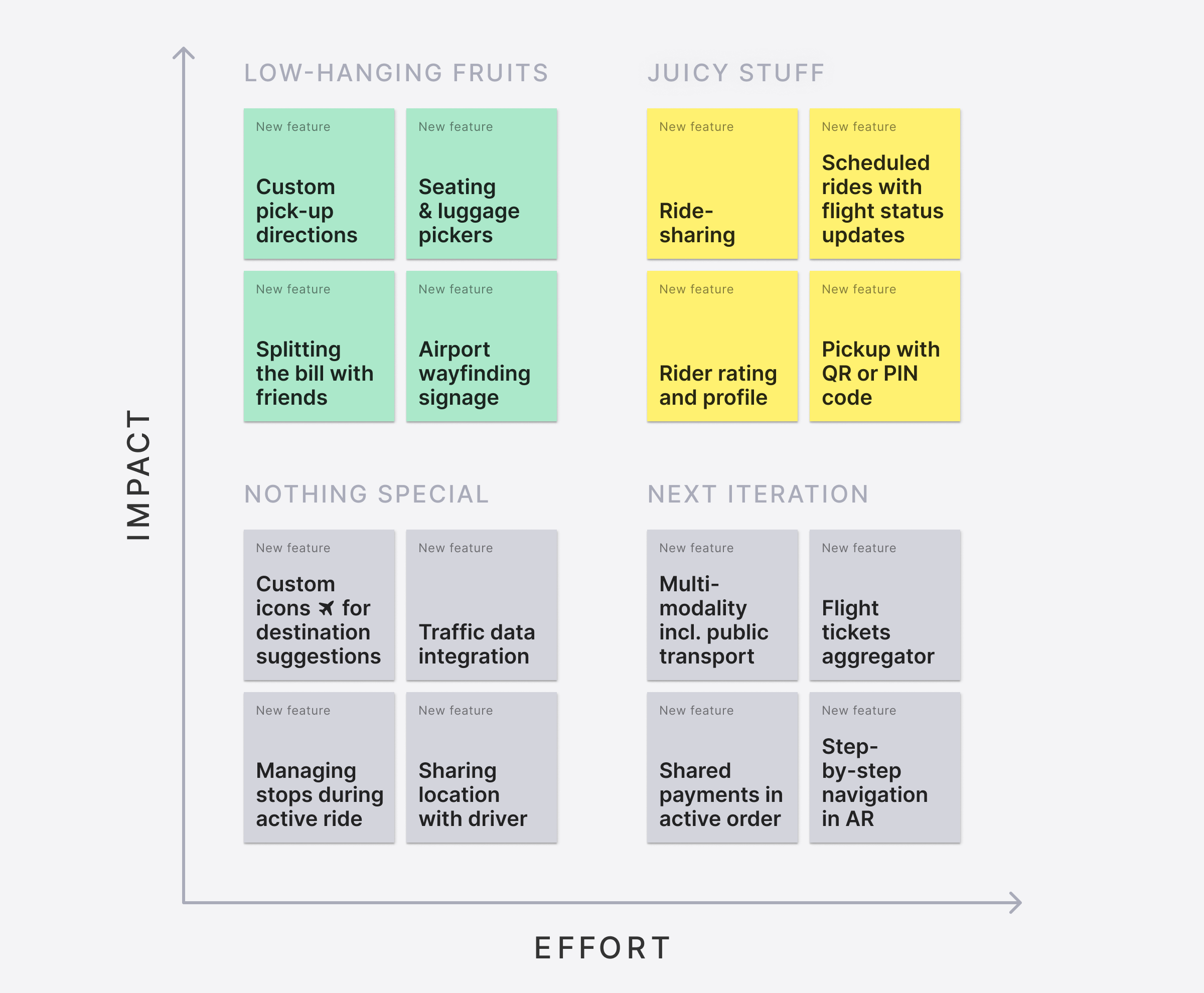
Impact/Effort matrix to assess the feasibility of ideas.
Solution
The proposed solution includes several features and user flows that work together to improve the riders’ experience. These are divided into separate projects to be implemented and tested one at a time:
- Flexible ride scheduling with flight status updates
- Ride-pooling with co-riders who have a match
- Custom pick-up directions
- Splitting the bill with friends
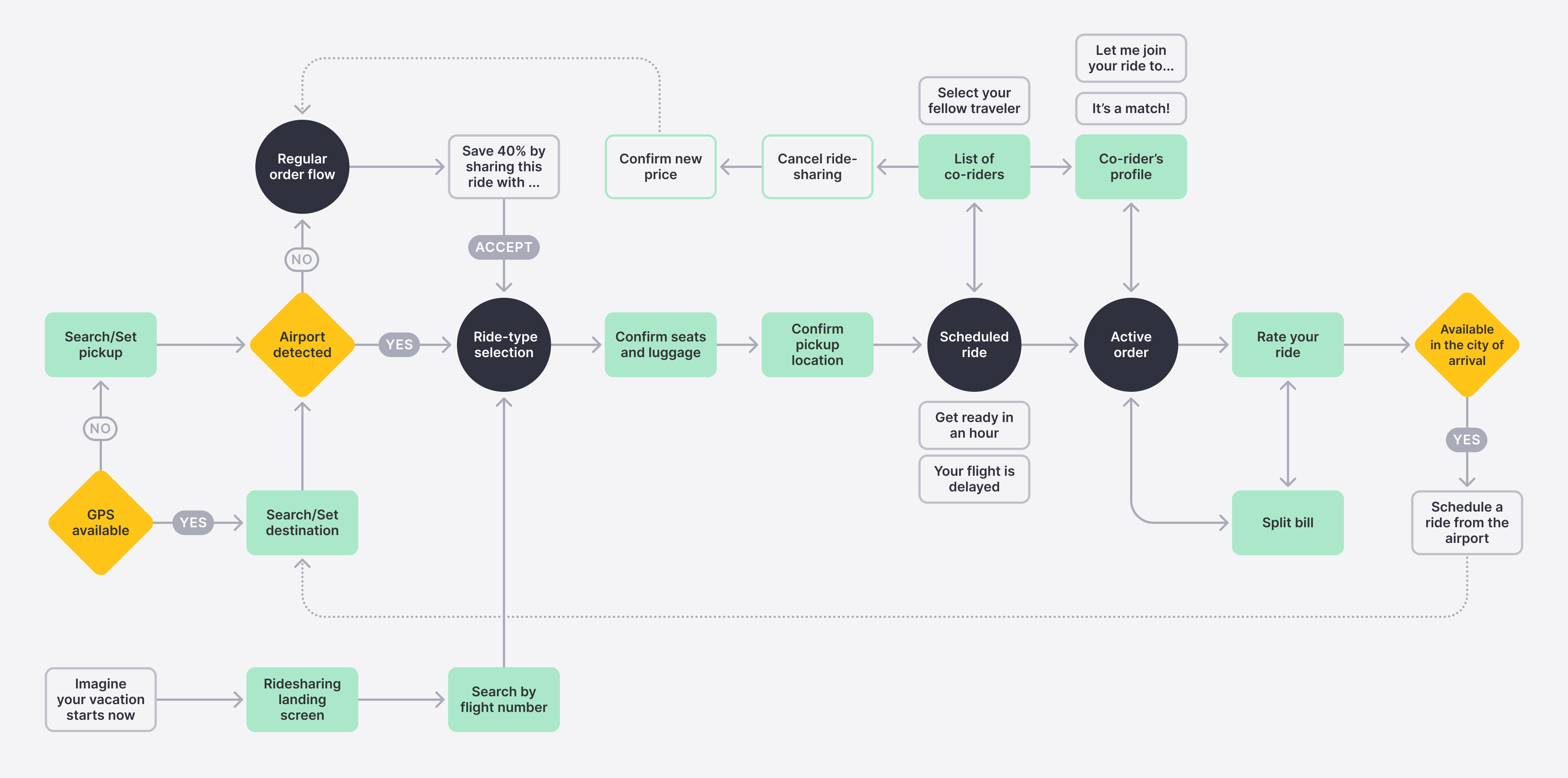
1. Ride scheduling
Unlike most competitors, we don’t ask users to input the pick-up time. When scheduling a ride, people are more focused on knowing exactly when they’ll arrive at the airport. To address this, we calculate the optimal pick-up time based on route distance, expected traffic, surge pricing, weather conditions, and airport congestion. If the flight is delayed, the drop-off ETA can be automatically adjusted to ensure the schedule stays accurate.
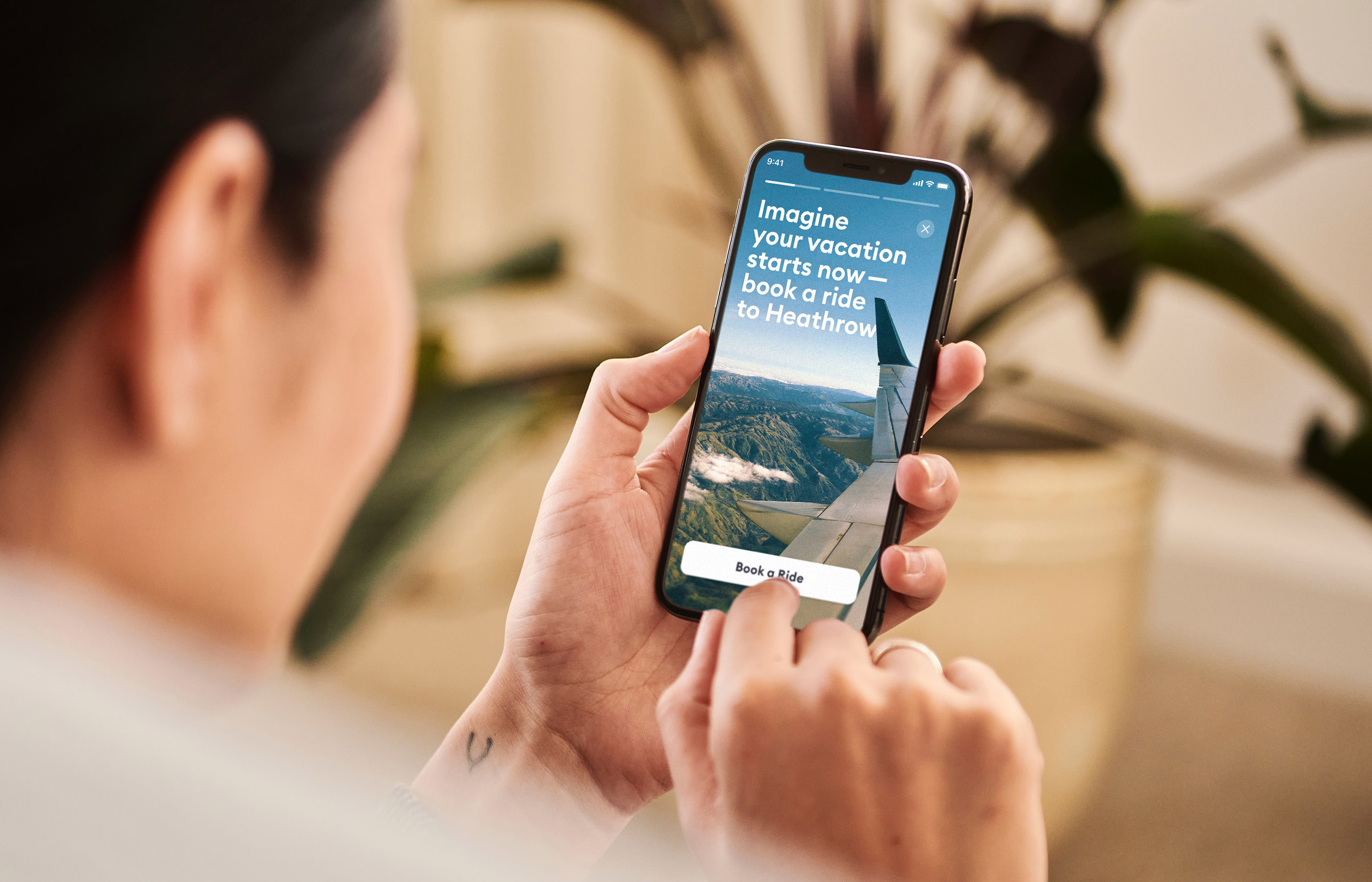
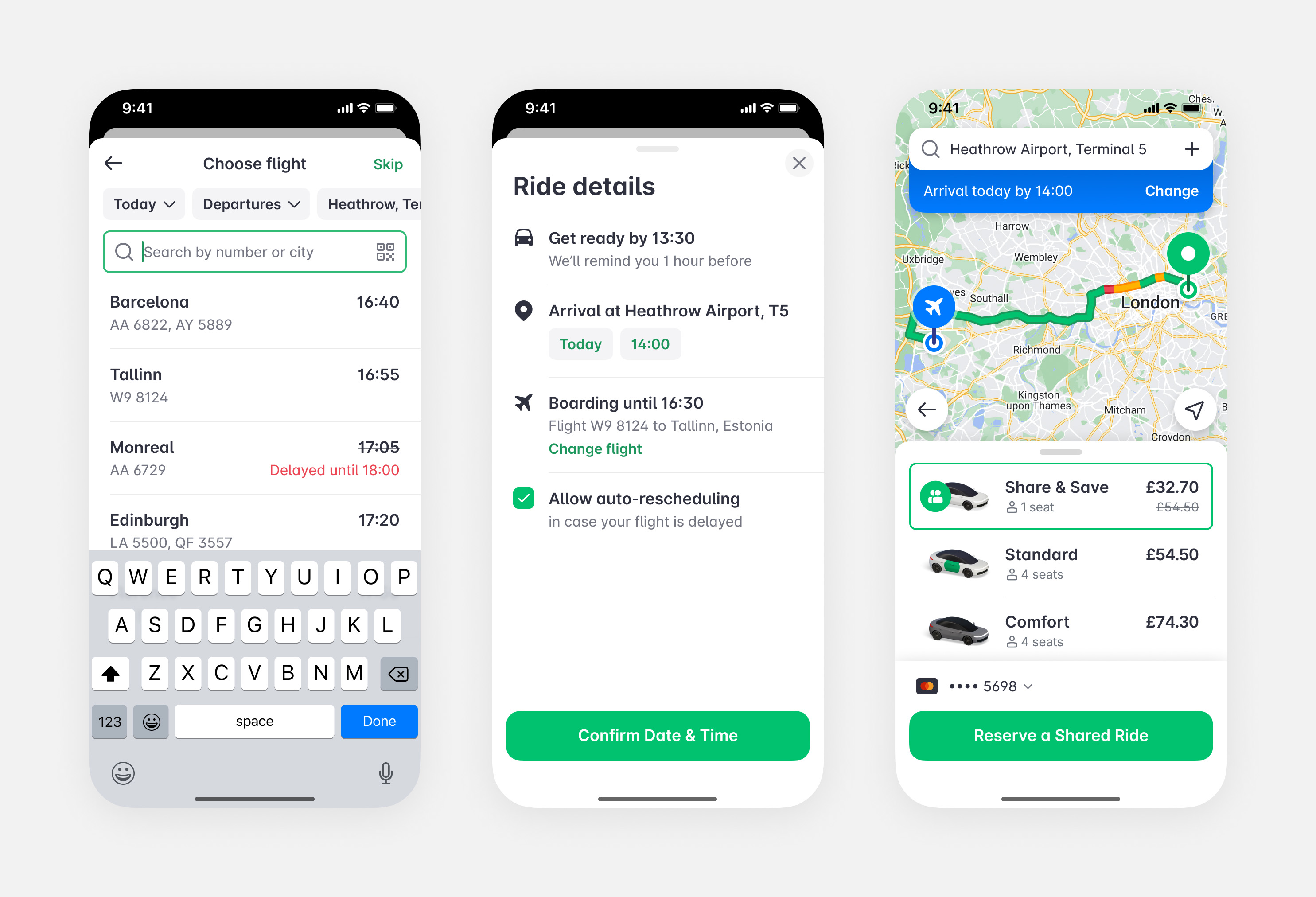
Additionally, ride scheduling can help solve another business challenge: many customers may not realise that Bolt operates in over 50 countries. To address this, we aim to remind users in advance as they approach the airport and suggest pre-booking a ride from their destination airport to their final stop. If the rider provides flight details ahead of time, the process becomes even smoother, as we already have their landing time and location.
2. Ride-pooling
Typically, the price of a scheduled ride is higher because we ensure the driver arrives on time, regardless of demand. To make this service more affordable, we can match multiple co-riders heading in the same direction. This approach reduces costs while maintaining reliability for customers.
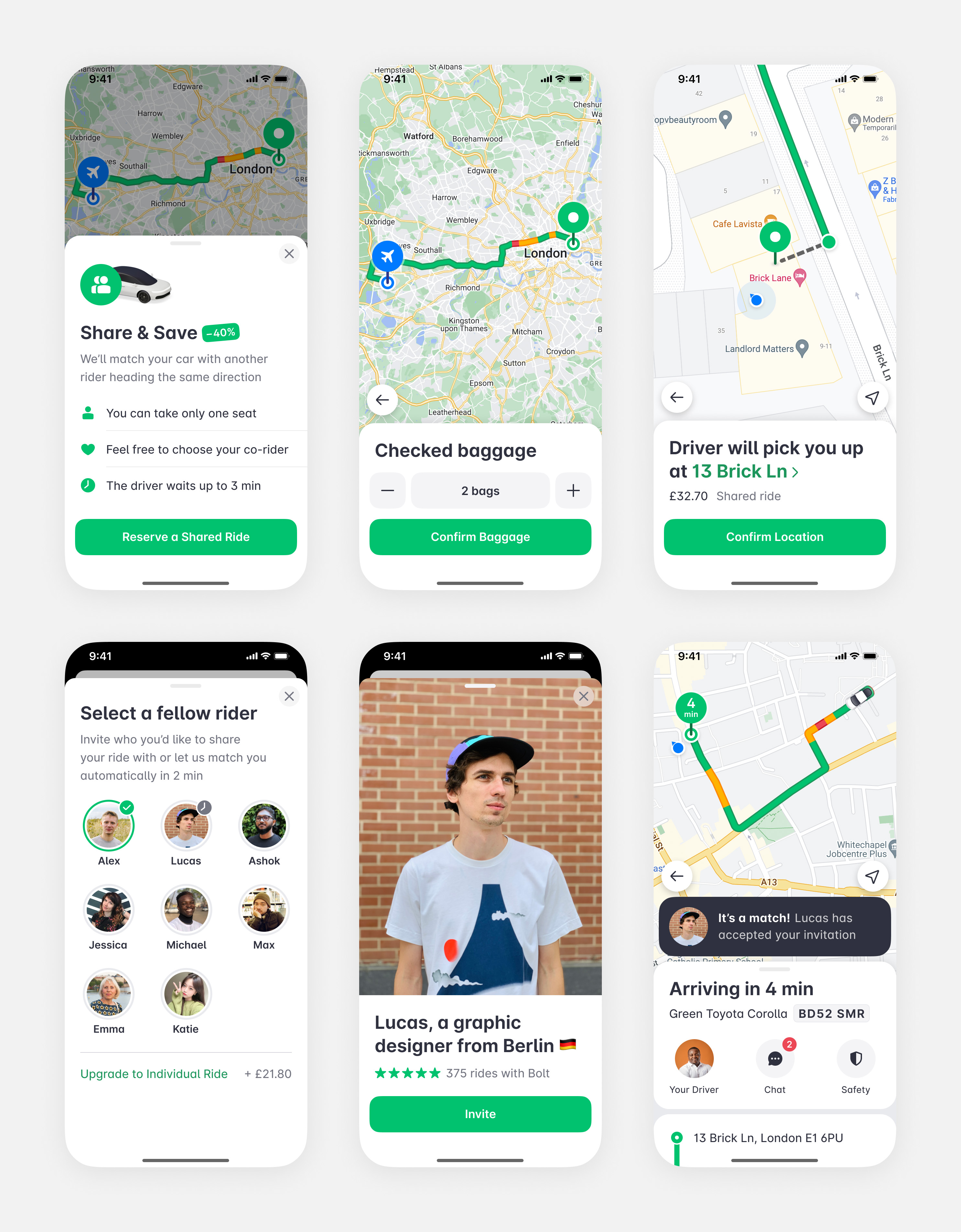
My proposal suggests allowing ride-pooling passengers to preview and select their co-riders by inviting or accepting invitations from each other. Alternatively, they can choose to pay the standard fare to travel alone. If no co-rider is selected or invited, the system will automatically match remaining passengers before the driver starts heading to the first pick-up point.
This approach aims to reduce the anxiety often experienced when sharing a ride with strangers by giving passengers more control over who they travel with.
3. Pick-up directions
Another challenge is that passengers ordering a taxi from the airport often struggle to find their driver in the crowded airport parking zones. Sometimes, it’s not even clear how to navigate out of the terminal.
In the MVP, we tackled this by providing step-by-step instructions to help passengers get from the arrivals area to the designated taxi pick-up location.
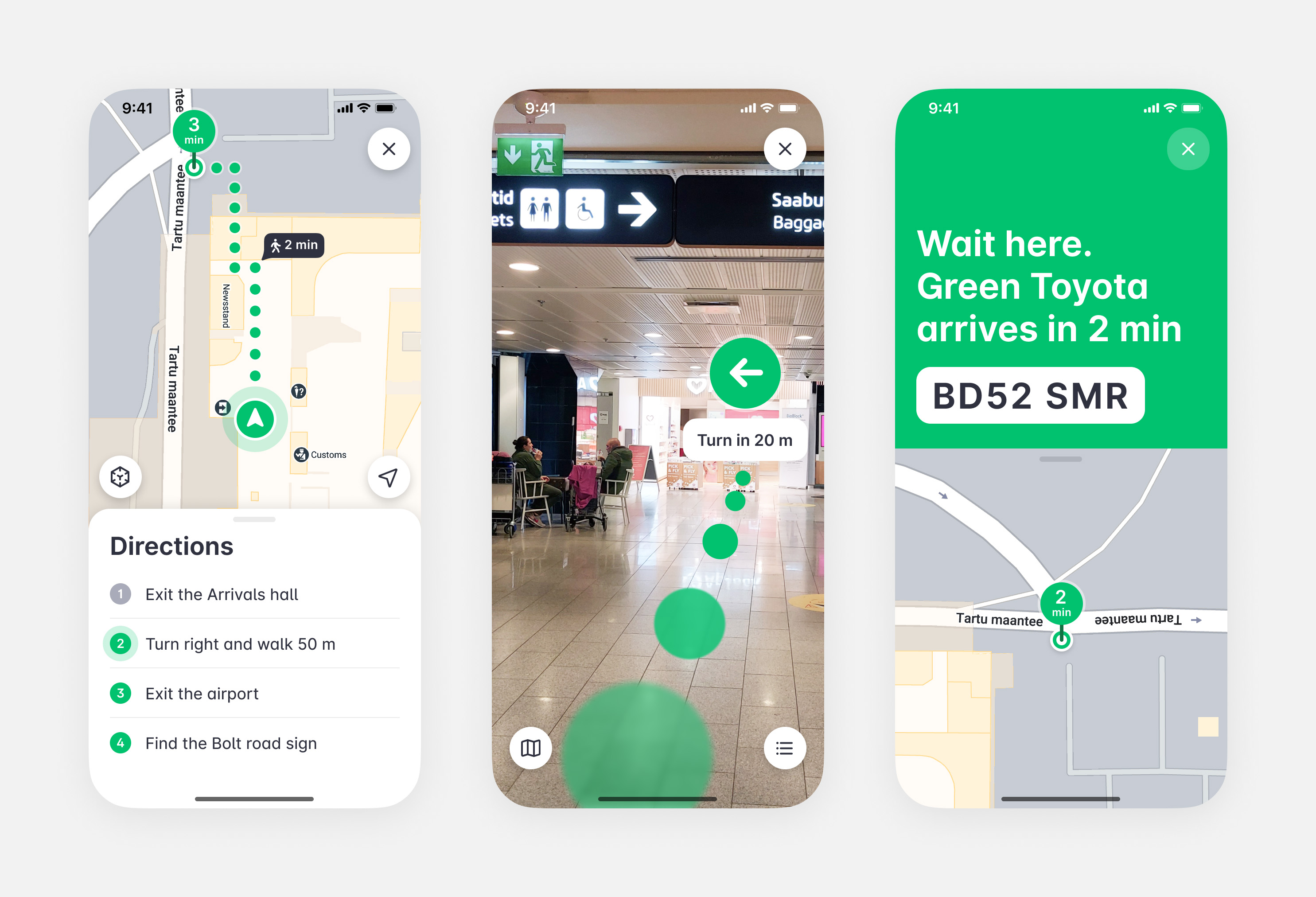
In future iterations, it would make sense to introduce AR navigation as a more visual, immersive, and interactive way to guide users. However, implementing this feature may be challenging due to unstable GPS data inside large buildings, which can affect its reliability.
To address this issue, additional technologies like Bluetooth beacons or Wi-Fi triangulation could be used to supplement GPS data and provide a more accurate location signal.
4. Splitting the bill
People often share rides with friends, so they don’t need the app to find fellow travellers in these cases. However, they still want an easy and convenient way to split the bill.
The proposed feature lets riders split the fare equally with their friends. It also serves as a great way to acquire new users who haven’t signed up for Bolt yet.
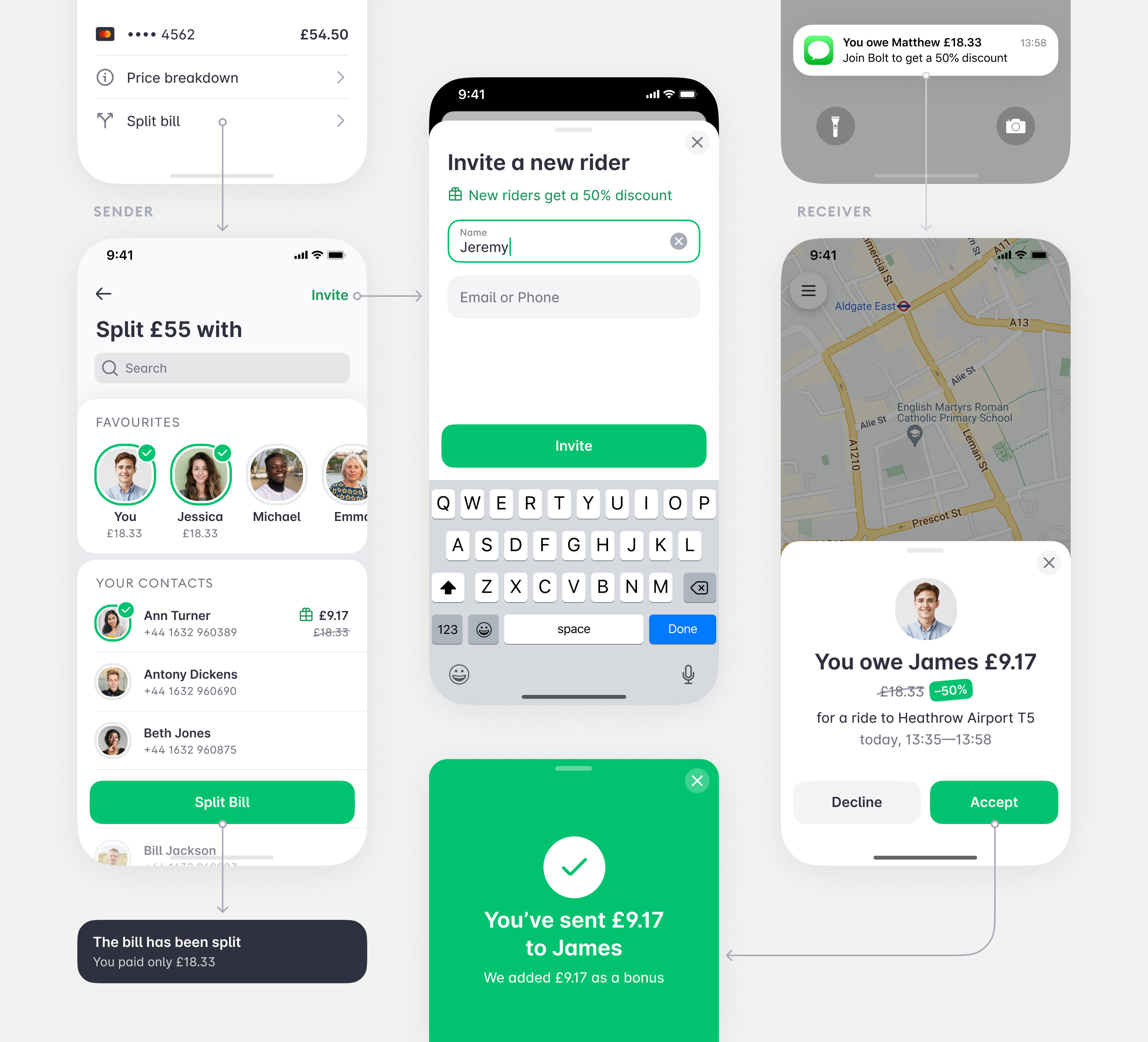
Business impact
After a year of testing, the redesign of the Bolt Rider app on iOS and Android has had a positive impact on the rider experience and key product metrics. GMV from airport rides increased by 2.5 times, reaching 8%. However, the proposed features have only been partially implemented, leaving plenty of opportunities for further improvement.
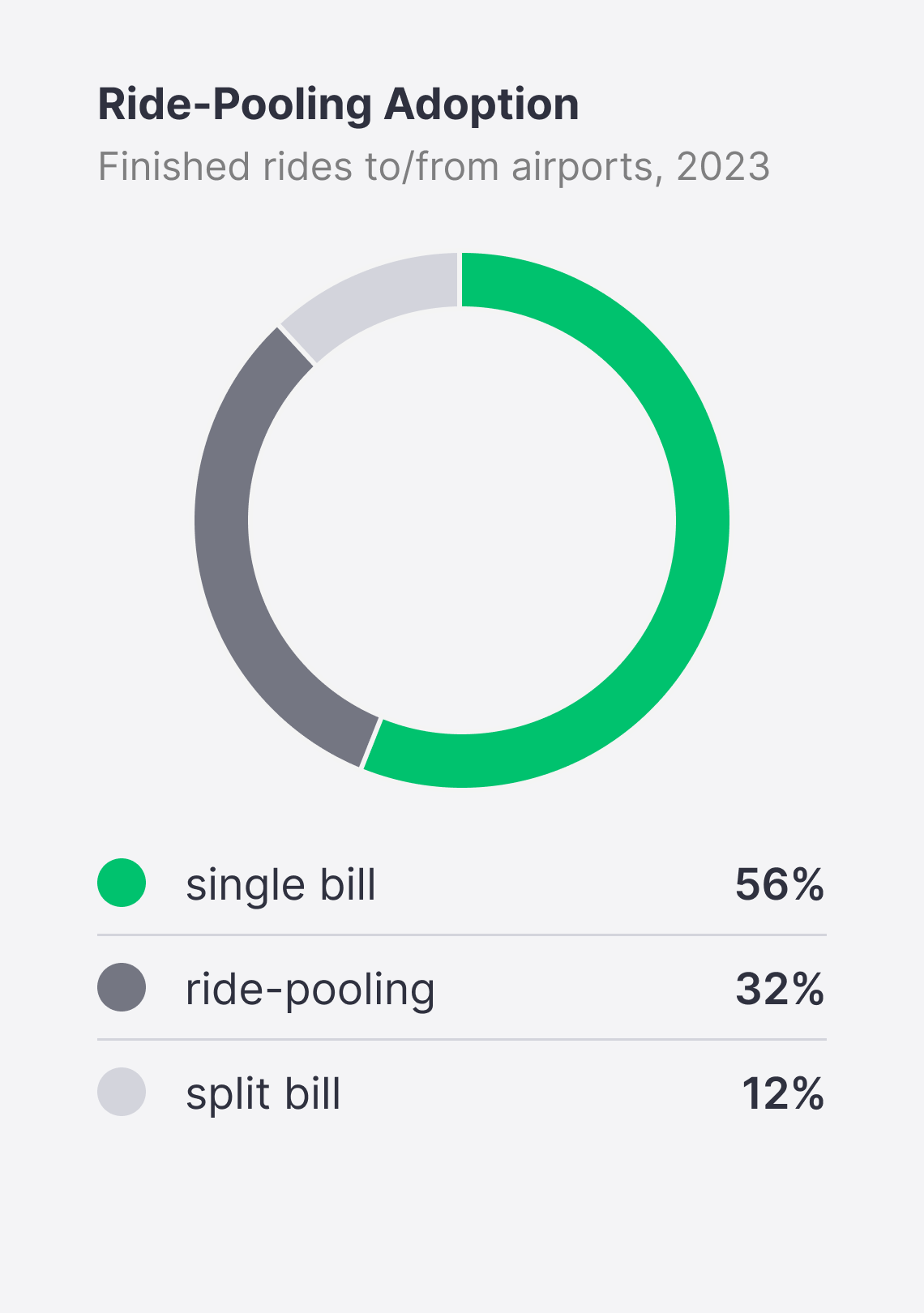
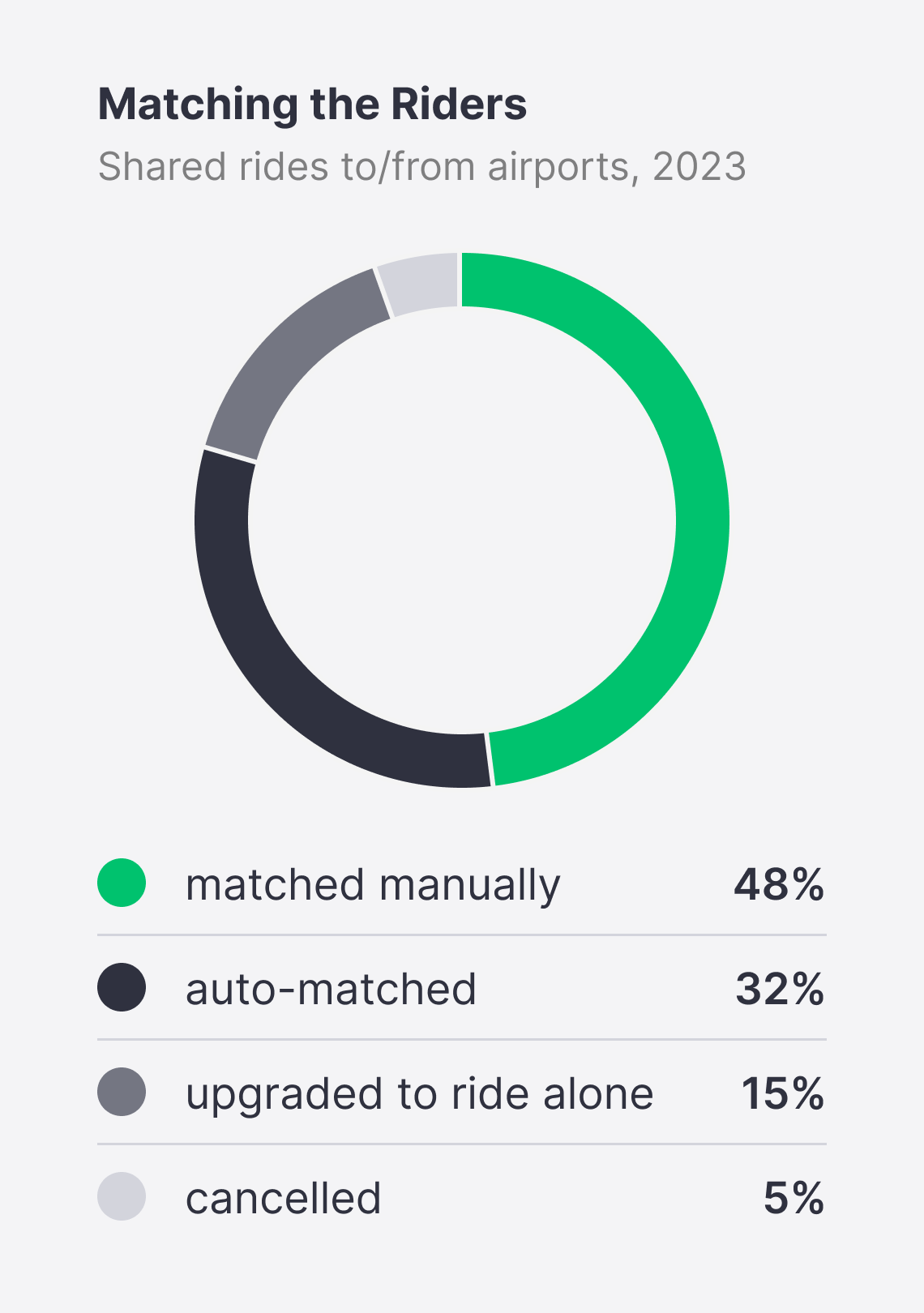
Ride-Pooling: 82% of users who tried sharing rides with strangers appreciated the option to preview co-riders’ profiles before matching. About half of these travellers successfully matched with others, while a third were matched automatically by the system. Only 5% of riders cancelled their orders, which is in line with the average cancellation rate for standard rides. Overall, ride-pooling has proven efficient for airport trips, making it worth expanding to other transport hubs and densely populated areas.
Ride Scheduling: The success of this feature depends on reliability and accurate ETAs. While it currently contributes 5% of GMV, there’s room to improve its effectiveness. Allowing users to set their desired arrival time at the airport instead of the pick-up time increased successful scheduled rides by 3.5%. However, searching by flight number wasn’t as popular, as most users preferred to input their arrival time manually.
Pick-up Directions: Improved pick-up directions at airports led to a 4% increase in completed rides. Driver wait-time decreased by 12%, which reduced cancellations by 5%.
Bill Splitting: This feature has been effective for acquiring new users. Riders acquired through bill splitting had a churn rate that was twice as low as users from other marketing channels.
For confidentiality reasons, I have omitted the actual values for metrics mentioned above.